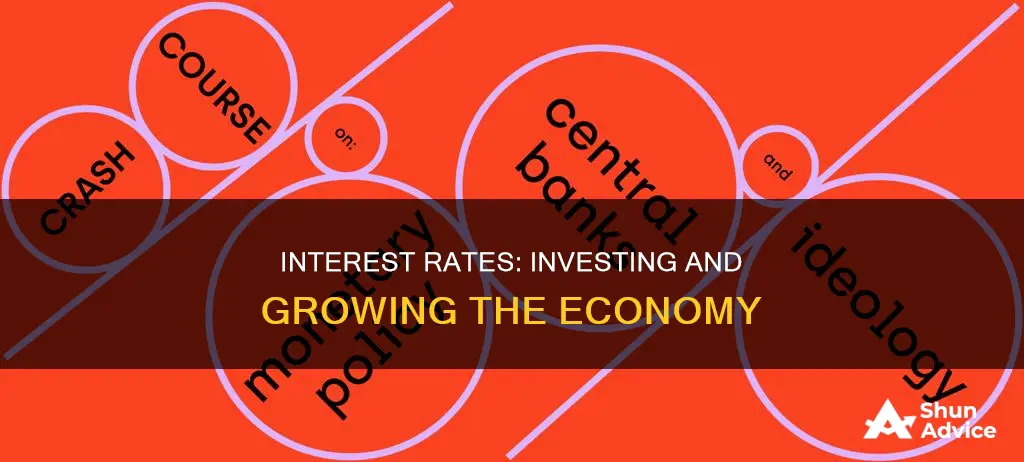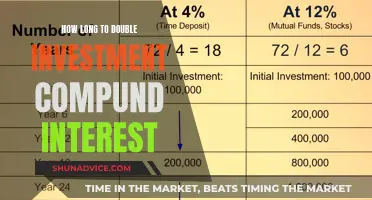
Interest rates have a significant impact on the economy, affecting everything from consumer spending to investment and economic growth. When interest rates are low, borrowing money is cheaper, which encourages consumer and business spending and investment. This can boost stock prices, but it can also lead to inflation. On the other hand, higher interest rates can reduce demand, economic growth, and inflation. They also make it more attractive to save money, as higher interest rates increase the value of a currency.
| Characteristics | Values |
|---|---|
| Lower interest rates | Encourage consumer and business spending and investment |
| Lower interest rates | Can boost stock prices |
| Lower interest rates | Can lead to inflation |
| Higher interest rates | Discourage spending |
| Higher interest rates | Can depress company returns and stock prices |
| Higher interest rates | Can combat inflation |
| Higher interest rates | Can reduce demand, economic growth and inflation |
| Higher interest rates | Increase the value of a currency |
| Higher interest rates | Make it more attractive to save in a deposit account |
What You'll Learn

How interest rates affect the stock market
Interest rates can have a significant impact on the stock market. When interest rates are low, borrowing money is cheaper, which encourages consumer and business spending and investment. This can boost stock prices. However, low-interest rates can also lead to inflation, which undermines the effectiveness of low rates. On the other hand, high-interest rates discourage spending and can depress company returns and, therefore, stock prices.
When the economy is growing quickly, the Federal Reserve may become concerned about inflation or other issues of too-fast economic growth. In this case, the Fed can increase the target federal funds rate to combat inflation and calm the economy. With higher interest rates, businesses may borrow and invest less due to higher lending costs and potentially stop hiring, which may reduce consumer spending as incomes fall.
Changes in interest rates tend to impact the stock market quickly but may have a lagging effect in other areas. The Federal Reserve, the US's central bank, changes its target interest rates to keep the economy at a healthy rate of growth. It raises rates when the economy is too hot and threatening to raise inflation.
Higher interest rates also increase the value of a currency. Due to hot money flows, investors are more likely to save in British banks if UK rates are higher than other countries. A stronger pound makes UK exports less competitive, reducing exports and increasing imports. This has the effect of reducing aggregate demand in the economy.
Understanding S-Corp Basis Rules and Interest Expenses
You may want to see also

How interest rates affect inflation
Interest rates can have a significant impact on inflation. When interest rates are low, borrowing money becomes cheaper, which encourages consumer and business spending and investment. This can lead to an increase in inflation as demand for goods and services rises. On the other hand, higher interest rates can help combat inflation by reducing demand and economic growth. When interest rates are high, borrowing money becomes more expensive, which discourages spending and can lead to a decrease in inflation.
The relationship between interest rates and inflation is complex and can have ripple effects throughout the economy. For example, when interest rates are low, it can boost stock prices as businesses may borrow and invest more. However, low-interest rates can also lead to inflation, which undermines the effectiveness of low rates. On the other hand, higher interest rates can depress company returns and stock prices, but they can also increase the value of a currency, making exports less competitive and reducing imports.
Central banks, such as the Federal Reserve in the United States, play a crucial role in managing interest rates to maintain a healthy rate of economic growth and keep inflation under control. They raise interest rates when the economy is growing too quickly and threatening to raise inflation. Similarly, they lower interest rates when economic growth is lagging and unemployment is rising to make borrowing cheaper and stimulate the economy.
Overall, interest rates are a powerful tool used by central banks to influence inflation and manage the economy. By adjusting interest rates, they can help maintain price stability and promote sustainable economic growth.
Interest Rate Hike: Impact on Your Investments
You may want to see also

How interest rates affect the economy
Interest rates have a significant impact on the economy. They help determine the cost of borrowing money and the reward for saving money. When interest rates are high, it becomes more expensive to borrow money, which can reduce demand, economic growth and inflation. This is because people are incentivised to save rather than spend.
When interest rates are low, it becomes cheaper to borrow money, which encourages consumer and business spending and investment. This can boost stock prices. However, low interest rates can also lead to inflation, which undermines the effectiveness of low rates.
The Federal Reserve, the US's central bank, changes its target interest rates to keep the economy at a healthy rate of growth. It raises rates when the economy is growing too quickly and threatening to raise inflation. When the economy is lagging and unemployment is rising, it can lower interest rates to make it cheaper to borrow money.
Higher interest rates can also increase the value of a currency. This is because investors are more likely to save in banks in countries with higher interest rates. A stronger currency makes a country's exports less competitive, reducing exports and increasing imports. This has the effect of reducing aggregate demand in the economy.
Impact of High Interest Rates on Investment Demand
You may want to see also

How interest rates affect consumer spending
Interest rates have a direct impact on consumer spending. When interest rates are low, borrowing money is cheaper, which encourages consumer spending. Lower rates can also boost stock prices. However, low interest rates can lead to inflation, which undermines the effectiveness of low rates.
On the other hand, higher interest rates discourage consumer spending. This is because higher rates make it more expensive for businesses to borrow money, which may cause them to reduce hiring and investment. As a result, incomes may fall, leading to reduced consumer spending. Higher interest rates also increase the value of a currency, making exports less competitive and reducing aggregate demand in the economy.
Additionally, higher interest rates provide an increased incentive to save rather than spend. This is because higher rates offer higher returns on savings accounts, making it more attractive to save.
Overall, changes in interest rates can significantly impact consumer spending. Lower rates tend to encourage spending, while higher rates discourage it. These changes can have ripple effects throughout the economy, affecting both consumers and businesses.
Impact of Rising Interest Rates on Savings and Investments
You may want to see also

How interest rates affect business investment
Interest rates can have a significant impact on business investment. When interest rates are high, businesses may borrow and invest less due to higher lending costs. This could also lead to businesses stopping hiring, which may reduce consumer spending as incomes fall.
On the other hand, when interest rates are low, borrowing money becomes cheaper, which encourages consumer and business spending and investment. However, low-interest rates can also lead to inflation, which undermines the effectiveness of low rates.
Interest rates also help determine the cost of borrowing money and the reward for saving money. When interest rates are high, it becomes more attractive to save in a deposit account because of the interest gained. A higher interest rate also increases the value of a currency, making exports less competitive and reducing exports while increasing imports. This has the effect of reducing aggregate demand in the economy.
Overall, changes in interest rates can have ripple effects throughout the economy, including on investments. Higher interest rates tend to reduce demand, economic growth, and inflation, while lower interest rates can stimulate the economy by making it cheaper to borrow money.
Trump's Dakota Pipeline Interest: Conflict or Investment?
You may want to see also
Frequently asked questions
Higher interest rates can reduce investment as businesses may borrow less due to higher lending costs. Lower interest rates can encourage investment as it becomes cheaper to borrow money.
Higher interest rates tend to reduce economic growth as they can reduce demand and consumer spending. Lower interest rates can stimulate economic growth as they encourage consumer and business spending.
Higher interest rates can combat inflation as they reduce demand and consumer spending. Lower interest rates can lead to inflation as they encourage spending and investment.







